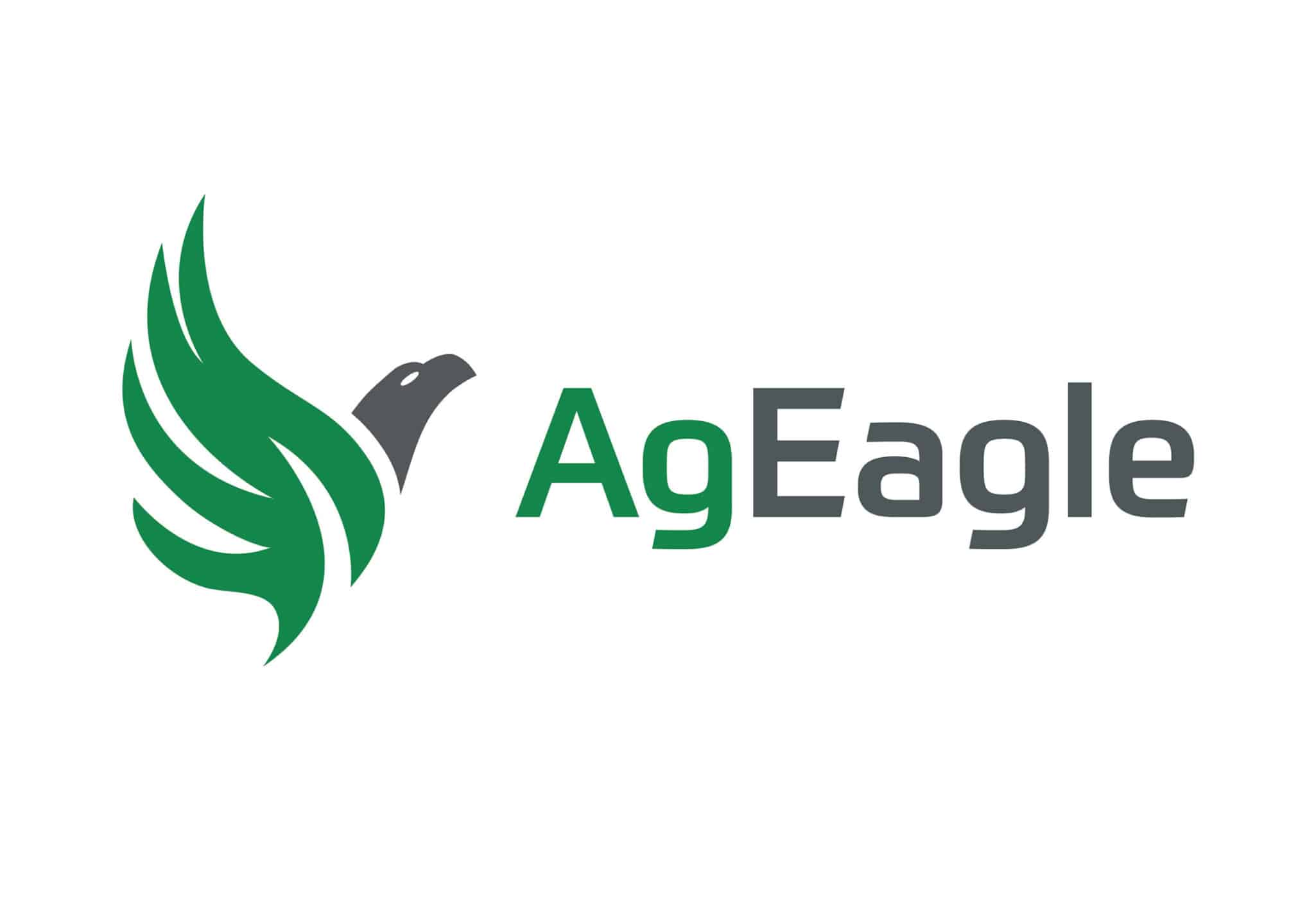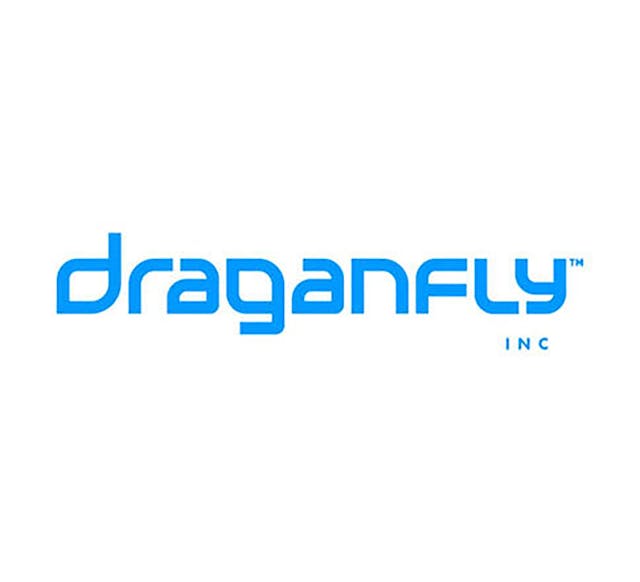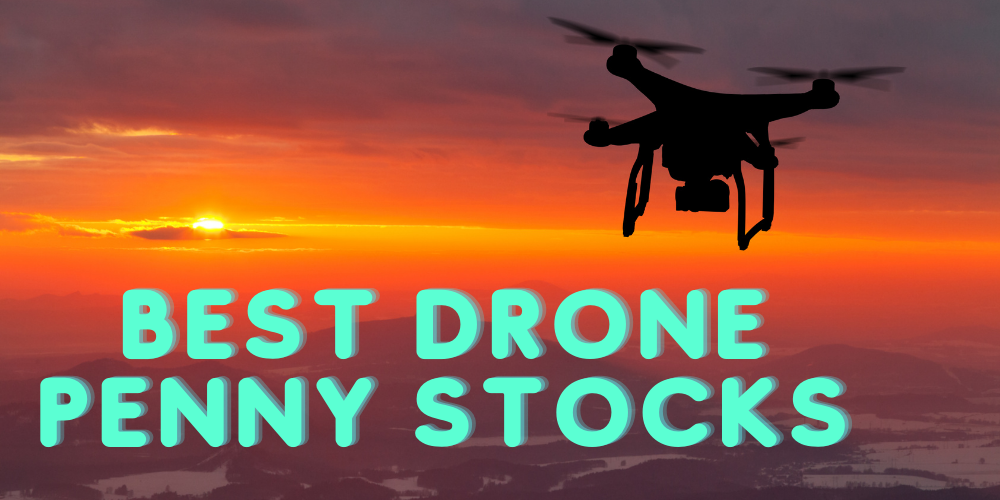The drone industry is buzzing. From military and defense applications to commercial delivery and agriculture, drones are no longer just toys or tech novelties.
As adoption grows across sectors, so does investor interest, especially in penny stocks that offer exposure to early-stage drone innovation.
Drone penny stocks, defined as those trading under $5, can provide massive upside potential. But they’re also risky, often volatile, and sometimes tied to unproven business models.
That’s why we’ve done the homework to bring you a list of seven top drone penny stocks worth watching in 2025.
TL;DR: Top Drone Penny Stocks
- DroneShield (DRSHF): Australia-based developer of AI-powered counter-drone systems; provides detection and defense against hostile UAS.
- Ondas Holdings (ONDS): Builds autonomous industrial drones through its Airobotics subsidiary.
- AgEagle Aerial Systems (UAVS): Provides drone-based imagery and inspection for commercial sectors.
- Draganfly (DPRO): Canadian firm making drones for public safety and emergency response.
- Lantronix (LTRX): Edge-AI connectivity specialist supplying drones and robotics systems
- Epazz Inc (EPAZ): Microcap with patented autonomous drones under the ZenaDrone brand.
- Dark Pulse Inc (DPLS): Uses drones for infrastructure surveillance and fiber-optic systems.
7 Best Drone Penny Stocks To Add
DroneShield (DRSHF)
Overview:
DroneShield is an Australia-based defense technology company specializing in counter-drone and drone detection systems.

Their flagship products include portable and fixed-position systems used by military, law enforcement, and infrastructure providers globally.
Growth Catalysts:
DroneShield has seen a sharp uptick in demand due to rising global concerns around drone-related threats.
From border security to battlefield applications, its AI-powered defense systems have become essential tools for national security agencies.
The company has landed contracts with NATO forces, various European governments, and defense departments in Asia.
With a Q1 2025 revenue of over AUD 33 million and strong order flow, DroneShield is on pace for a record-breaking year.
Their product innovation pipeline and global expansion into the U.S. and Middle East markets present further upside.
Risks:
Being an international company, DroneShield faces currency risks and regulatory complexities, particularly when navigating U.S. defense procurement systems.
It also trades on the OTC market, which can limit liquidity and visibility compared to NASDAQ- or NYSE-listed peers.
Lastly, its valuation may be volatile due to geopolitical news cycles and contract announcements.
Conclusion:
DroneShield is a compelling player in the counter-drone defense segment, benefiting from real contracts, proven technology, and global demand.
While international exposure and OTC status pose risks, its specialized product line and defense sector traction make it a smart addition to a speculative drone penny stock portfolio.
Ondas Holdings (ONDS)
Overview:
Ondas Holdings operates at the intersection of industrial drone technology and wireless connectivity.
Through its subsidiary Airobotics, the company builds fully autonomous drone systems for public safety, critical infrastructure, and industrial monitoring.

Growth Catalysts:
One of Ondas’ standout developments is its work with the Israeli government, where its Airobotics drones are approved for autonomous urban drone operations.
This type of regulatory green light gives Ondas a leg up in markets that demand strict airspace compliance.
The company is also targeting U.S. municipalities and utility companies for long-term drone-as-a-service contracts.
These recurring revenue streams could stabilize financials and improve investor confidence.
Risks:
Ondas is investing heavily in R&D and infrastructure, which has led to recurring losses. The company may need additional funding, potentially leading to shareholder dilution.
There’s also stiff competition in the autonomous drone space, and Ondas will need to demonstrate clear differentiation to win large-scale deals.
Conclusion:
Ondas Holdings is a speculative play with high-tech potential. If its autonomous drones gain more traction in U.S. markets, particularly for municipal and industrial applications, it could emerge as a key player in the drone ecosystem.
AgEagle Aerial Systems (UAVS)
Overview:
AgEagle began as a drone company focused on agriculture but has since expanded into aerial imagery and drone-based inspection services.

The company’s pivot reflects a strategic attempt to find product-market fit amid changing industry needs.
Growth Catalysts:
AgEagle’s acquisition of measurement and inspection tech companies positions it to offer end-to-end drone services.
These include not just the drone hardware but also the analytics platforms that interpret aerial data.
With sectors like insurance and infrastructure requiring faster, more efficient inspections, AgEagle’s all-in-one model could gain traction.
The firm is also exploring partnerships with other tech companies to expand its service offerings.
Risks:
The company has faced revenue declines and management changes, raising concerns about long-term stability.
Its agricultural focus, once its core identity, is now a smaller part of its business, which may confuse some investors.
Also, its financials indicate ongoing cash burn, making it dependent on future fundraising.
Conclusion:
AgEagle is attempting a bold pivot into inspection and data services, a move that could pay off if the commercial drone market scales.
However, its inconsistent track record means investors should tread carefully.
Draganfly (DPRO)
Overview:
Draganfly is a Canadian drone manufacturer with U.S. operations.
The company specializes in drones for emergency response, environmental monitoring, and public safety.

Growth Catalysts:
Draganfly is actively targeting first responders and emergency services.
It recently partnered with several U.S. EMS and law enforcement agencies to provide drone solutions for search and rescue operations.
These partnerships not only validate the product but also pave the way for recurring government contracts.
The firm is also investing in AI and machine learning to enhance its drone’s decision-making capabilities.
Risks:
The company is still pre-profit and operates with a relatively small team and limited manufacturing capacity.
It faces stiff competition from larger defense and commercial drone firms.
Moreover, being a Canadian company, it may face additional regulatory hurdles when bidding for U.S. government contracts.
Conclusion:
Draganfly is an innovative but early-stage company with real-world deployments.
Its focus on life-saving applications makes it a unique play in the drone space, though operational and financial execution remains key.
Lantronix (LTRX)
Overview:
Lantronix is a U.S.-based provider of hardware and software solutions for edge computing and connectivity—crucial tech behind modern drones.

Growth Catalysts:
Lantronix has positioned itself as a back-end enabler of smart devices, including industrial and military drones.
Its recent push into AI-powered edge solutions, combined with 5G-ready hardware, has opened doors in aerospace, robotics, and autonomous drone fleets.
The company has also expanded through acquisitions, such as NetComm and Uplogix, to enhance its connectivity ecosystem.
Given the rising need for high-speed, secure, low-latency communications in drones, Lantronix stands to benefit from this technological tailwind.
Risks:
While its solutions support drone ecosystems, Lantronix’s core business is broader, which may dilute direct drone exposure.
Additionally, revenue growth has been modest, and the company faces stiff competition from larger semiconductor and connectivity players.
Its stock has also experienced some volatility due to cyclical demand and supply chain constraints.
Conclusion:
Lantronix offers indirect yet meaningful exposure to the drone sector through its edge-computing and networking infrastructure.
Its real-world deployments and industry partnerships give it a foundational role in the drone value chain, making it a unique, lower-profile addition for penny stock investors focused on long-term infrastructure plays.
Epazz Inc. (EPAZ)
Overview:
Epazz is a microcap company operating in several emerging tech fields, including drone delivery, blockchain, and cloud-based business software.
Its drone division, ZenaDrone, aims to develop autonomous drones for delivery and surveillance applications.
Growth Catalysts:
The company has filed multiple patents related to autonomous drone systems and has hinted at early-stage partnerships in logistics and defense sectors.
Its diversified tech approach allows for cross-functional synergies, such as integrating blockchain into drone logistics.
Epazz has also received government grants and is targeting specific niches like agriculture and military base logistics.
Risks:
Epazz trades at extremely low volumes and is listed on the OTC market, which limits liquidity and transparency.
Its financials are thin, and the company is yet to generate meaningful revenue from its drone operations.
Furthermore, its ambitions span multiple sectors, which may dilute focus and execution.
Conclusion:
Epazz represents a high-risk, high-reward opportunity. Its ZenaDrone unit is speculative but intriguing, especially if it can secure credible contracts or partnerships.
However, investors should treat it as a moonshot rather than a core holding.
Dark Pulse (DPLS)
Overview:
Dark Pulse develops smart infrastructure solutions using fiber-optic sensing technology.

Growth Catalysts:
Dark Pulse is expanding its technology stack to include drone-based surveillance, particularly for critical infrastructure.
Its recent acquisitions and partnerships hint at a strategy to become a full-stack provider of security and monitoring solutions.
Government interest in infrastructure resilience could drive demand for such services.
Risks:
Dark Pulse operates in a niche segment and is still refining its commercial model.
The company’s balance sheet is under pressure, and it has diluted shareholders in the past.
Its branding as a drone stock may also confuse investors since its core technology is broader.
Conclusion:
Dark Pulse is a crossover play in the drone space with a focus on infrastructure security.
While not a traditional drone stock, its use of drones in deploying fiber-optic tech makes it a unique addition to a speculative portfolio.
What Makes Drone Penny Stocks Attractive
Drone penny stocks offer a unique mix of innovation and affordability.
With drones rapidly integrating into industries like logistics, agriculture, defense, and infrastructure, small-cap players can be early movers in multi-billion-dollar markets.

The growing use of autonomous and AI-powered drones across critical applications like disaster response and border surveillance also creates significant tailwinds.
Plus, as the U.S. Department of Defense expands its Blue UAS program and private sector investment increases, demand for secure, scalable drone solutions is likely to soar.
Penny stocks tied to these developments could see outsized gains if they execute well.
Moreover, retail investors are increasingly drawn to the narrative potential of drone stocks.
These companies often have a compelling story: revolutionary technology, disruptive models, or exclusive contracts.
That storytelling aspect can boost sentiment and drive volume, key factors in the penny stock world.
How to Vet Drone Penny Stocks
Vetting drone penny stocks involves more than just examining the ticker price.
The first step is to analyze the business model: is the company making and selling drones, offering software-as-a-service (SaaS) for drone management, or bundling AI with aerial platforms?
Understanding the core value proposition helps assess long-term viability.
Next, dig into the financials. Look for recent filings like 10-Qs and 10-Ks on the SEC’s EDGAR database.
Pay attention to cash on hand, revenue growth trends, and burn rate. Many penny stocks operate at a loss, so understanding how long they can stay afloat without dilution or debt is key.
You should also evaluate the leadership team. Strong management with relevant experience can often be the difference between hype and execution.
Should You Buy Drone Penny Stocks?
Drone penny stocks could be worth looking into, especially for investors who want to bet on a fast-growing technology.
These unmanned aircraft are getting more popular among the military, government, and private companies. Meanwhile, the potential uses span from security solutions to space technology, aerial mapping, and emergency response.
Drones also have a future in delivering perishable food items and packages, with companies like FedEx, Walmart, and Amazon heavily investing in them.
However, drone technology faces many challenges, including regulatory issues with the Federal Aviation Administration. Further, some shares are still penny stocks, which are notoriously volatile and risky.
While investors can take advantage of the growth potential, they are still likely to lose a lot if they aren’t cautious.
Drone Penny Stocks: Factors To Consider
The best drone penny stocks may be flying high, but stay grounded with your investments. Consider these factors before adding drone penny stocks to your portfolio:
Volatility
Just like drones themselves, shares of any penny stock frequently move up and down.The ride can throw even the most savvy investor if you’re not prepared for it.
Traders often use these shake-ups for gains, but long-term players may have to grin and bear it.
Coming in at low valuations could give huge runaways to growth, though, should the company’s technology really take off.
Liquidity
Drone penny stocks typically represent small companies with limited numbers of shares. This can prove to be an issue from both a purchasing standpoint and when it comes time to sell.
Even when the going’s good, you’ll need to find a buyer to grab stocks you’re looking to get rid of. Some penny stocks may only trade a few dozen shares per day, limiting your chances of selling your investment at a crucial time.
Technology Stack
Companies that develop their own proprietary hardware or possess patented drone designs often have a technological edge that sets them apart from commodity drone manufacturers.
These firms are more likely to offer unique features or in-house AI capabilities that further strengthen their offerings.
Additionally, look for government certifications like Blue UAS, which signal that the company’s products meet rigorous federal standards for cybersecurity and reliability.
These certifications can open the door to lucrative defense contracts and are often seen as a major endorsement of both quality and trustworthiness.
Real-world Deployments or Contracts
A drone company that has secured actual commercial or government agreements is much more likely to be generating revenue, building customer relationships, and proving the viability of its technology.
These deployments serve as real-world validation and can lead to repeat business or long-term service contracts, which are vital for turning early innovation into sustainable operations.
In contrast, firms still in the prototype or testing phase face higher uncertainty and longer paths to monetization, making them riskier bets.
Company Fundamentals
Always look under the hood at a company’s fundamentals before scooping up shares, drone penny stocks or otherwise. A business without a solid foundation is much more likely to crumble under pressure.
Both strong cash flows and a well-equipped executive suite provide surfaces these companies can stand on, even as they’re finding their way.
State of the Economy
It’s easy for penny stocks to get caught up in the muck and mire of the greater economic landscape. Sudden part scarcity or unfavorable relations with a particular country can shut down a small company before it can find a new supplier.
Furthermore, ongoing regulatory changes to the drone industry could similarly wreak havoc. A new law coming down from on high could catch a drone manufacturer completely off guard.
Application
Drones have so many uses, from deliveries to window washing and reconnaissance. Check out the sector a drone stock targets and make sure the desire matches the need.

Drone Penny Stocks FAQs
Can You Get Rich Off Penny Stocks?
The chances of getting rich off penny stocks in the long term are slim since they are tricky and risky.
However, folks can take advantage of their volatility to make quick profits. Regardless, experts always advise penny investors to be cautious and do their research to minimize losses and maximize growth.
Are drone penny stocks risky?
Yes, they can be extremely volatile and are often tied to early-stage business models. However, the potential for outsized returns exists if a company hits key milestones or secures major contracts
Who Is the Leader in Drone Technology?
Some of the biggest companies in the drone market are DJI, Aerialtronics, Kespry, and eHang.
Other established tech businesses like Google, Amazon, and Walmart are also heavily investing in this technology.
How Has The Drone Industry Performed Recently?
The drone industry has experienced steady momentum in recent years, driven by increased adoption across both government and commercial sectors.
Defense agencies are investing more heavily in drone technologies for surveillance, reconnaissance, and tactical missions.
Meanwhile, commercial applications in agriculture, logistics, infrastructure inspection, and emergency response have gained traction as drones become more capable and affordable.
Advances in artificial intelligence, edge computing, and autonomous flight have also expanded the range of drone use cases.
Overall, the industry is transitioning from niche innovation to mainstream utility, with growing acceptance and deployment across multiple industries worldwide.
Final Thoughts
Drone penny stocks are an exciting but volatile way to gain exposure to one of the fastest-growing tech segments.
Whether it’s military surveillance, urban delivery, or emergency response, drones are poised to play a bigger role in modern life.
These seven stocks represent diverse approaches to this trend, from pure drone manufacturers to infrastructure firms using drone tech. As always, do your due diligence and consider your risk tolerance before diving in.


 Tags:
Tags:










